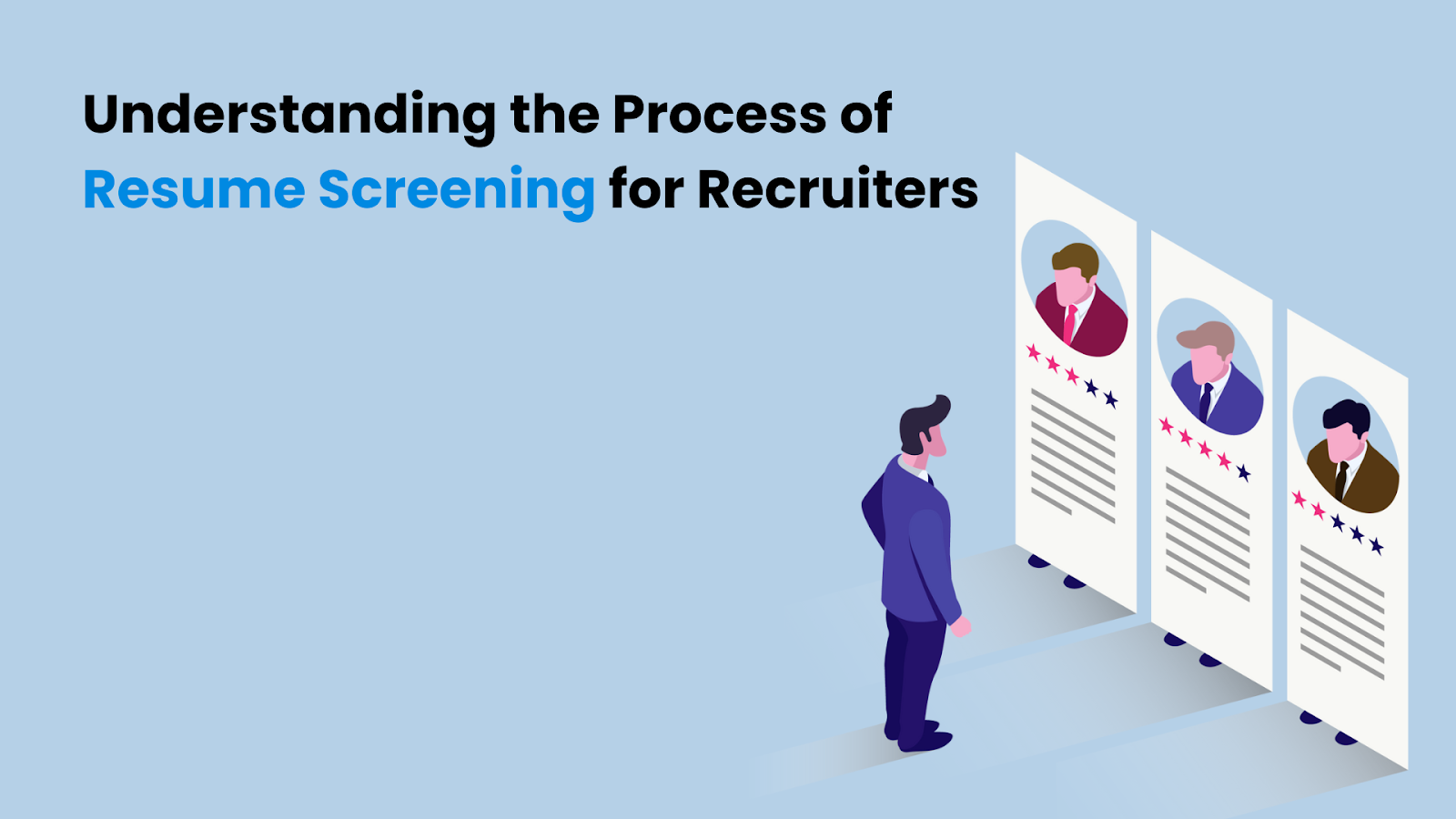Imagine receiving hundreds of resumes for a single job posting and being tasked with finding the perfect candidate in record time. The process can be overwhelming, time-consuming, and prone to errors. What if there was a way to simplify it without compromising quality?
That’s where resume screening comes into play. This crucial step in the hiring process ensures that recruiters focus their energy on the most qualified candidates. It involves carefully reviewing resumes to identify individuals whose skills, qualifications, and experiences align with the job requirements.
In this blog, we’ll explore resume screening, step-by-step process that recruiters follow. Whether you’re a recruiter aiming to streamline your hiring workflow or a job seeker striving to stand out, this guide has something for you.
To start, let’s clarify what resume screening entails.
What is Resume Screening?
Resume screening is the process of evaluating job applications to assess whether candidates possess the qualifications, skills, and experience required for a specific position. It serves as the first filter in recruitment, ensuring that only the most suitable candidates proceed to the next stages. The essence of screening resumes meaning lies in its ability to streamline the hiring process while maintaining high-quality standards.
Key Components of Resume Screening
- Qualifications Matching: Ensuring candidates possess the necessary education, skills, and experience.
- Keyword Identification: Searching for specific terms related to the job to filter suitable candidates.
- Red Flag Detection: Identifying potential issues such as frequent job changes or employment gaps.
- Cultural Fit Assessment: Gauging whether a candidate's values and work style align with the company's culture.
Understanding these components helps recruiters streamline the screening process and focus on candidates who are most likely to succeed in the role.
With a clear definition in place, let’s explore why resume screening is so important.
Importance of Resume Screening
Effective resume screening is pivotal for several reasons:
- Efficiency: It narrows down a large pool of applicants to a manageable number, saving time and resources.
- Quality of Hire: By identifying the most qualified candidates, organizations can enhance the overall quality of their hires.
- Candidate Experience: A streamlined screening process ensures timely communication with candidates, improving their experience.
- Cost Savings: Reducing the number of candidates who proceed to interviews lowers recruitment costs.
- Legal Compliance: Ensures that the screening process adheres to employment laws and regulations, minimizing legal risks.
Recognizing the significance of resume screening underscores the need for a well-structured and effective approach.
Next, we’ll look into the detailed steps involved in the resume screening process.
The Resume Screening Process
Understanding the screening resumes involves breaking down the process into clear, actionable steps. Here's a comprehensive guide to the resume screening process:
1. Define Job Requirements
Before screening resumes, clearly outline the job's requirements, including necessary skills, experience, education, and any other relevant criteria. This foundation ensures consistency and objectivity during the screening process.
2. Collect Resumes
Gather applications through various channels such as job boards, company websites, recruitment agencies, and employee referrals. Centralizing resumes in an organized system simplifies the screening process.
3. Initial Screening
Conduct an initial review to eliminate resumes that do not meet the basic qualifications. This step involves checking for essential criteria such as required education, relevant experience, and specific skills.
4. Detailed Evaluation
For resumes that pass the initial screening, perform a more in-depth analysis. Look for achievements, career progression, certifications, and any additional qualifications that make a candidate stand out.
5. Keyword Filtering
Utilize keyword filtering to identify candidates whose resumes contain specific terms related to the job. This technique helps in efficiently narrowing down the candidate pool, especially when dealing with a high volume of applications.
6. Red Flag Identification
Identify any potential issues in the resumes, such as unexplained employment gaps, frequent job changes, or inconsistencies in job titles and responsibilities. These red flags warrant further investigation during the interview stage.
7. Shortlisting
Based on the detailed evaluation, create a shortlist of candidates who best match the job requirements and demonstrate the potential to thrive in the role.
With an understanding of the process, let’s see how Tidyhire takes resume screening to the next level.
How Tidyhire Simplifies Resume Screening
Tidyhire is designed to automate and enhance every stage of hiring, especially resume screening. Its powerful AI-driven features enable recruiters to focus on building connections while letting the system handle time-consuming tasks.
1. Automated Resume Parsing
Tidyhire extracts and organizes key information from resumes, such as qualifications, skills, and work experience. This eliminates the need for manual data entry and enables faster comparisons with job requirements.
2. AI-Powered Candidate Matching
Using advanced algorithms, Tidyhire evaluates resumes and matches candidates with job descriptions. It goes beyond keywords, analyzing the context to ensure more accurate shortlisting.
3. Seamless Workflow Integration
Tidyhire integrates with popular communication tools like Slack and MS Teams. This allows recruiters to manage the screening process within their existing workflows, improving productivity.
4. Personalized Candidate Engagement
Tidyhire automates follow-ups and communications, ensuring candidates remain engaged throughout the hiring journey. This feature enhances the candidate experience, building trust and interest.
5. Data-Driven Insights
The platform provides comprehensive analytics, helping recruiters make informed decisions. Reports on candidate metrics, screening efficiency, and hiring trends empower organizations to refine their recruitment strategies.
Conclusion
Understanding the screening resumes is essential for recruiters aiming to identify and hire the best candidates efficiently. By implementing a structured resume screening process, adopting best practices, and leveraging advanced tools like TidyHire, organizations can enhance their recruitment strategies, reduce hiring costs, and build a strong, talented workforce.
TidyHire stands out as a valuable partner in optimizing the resume screening process. With its advanced ATS, customizable screening criteria, bias mitigation tools, and comprehensive analytics, TidyHire empowers recruiters to make informed and objective hiring decisions.
Ready to revolutionize your resume screening process? Contact TidyHire today and discover how our innovative solutions can help you choose the right candidates for your organization, driving your business forward with top-tier talent.

